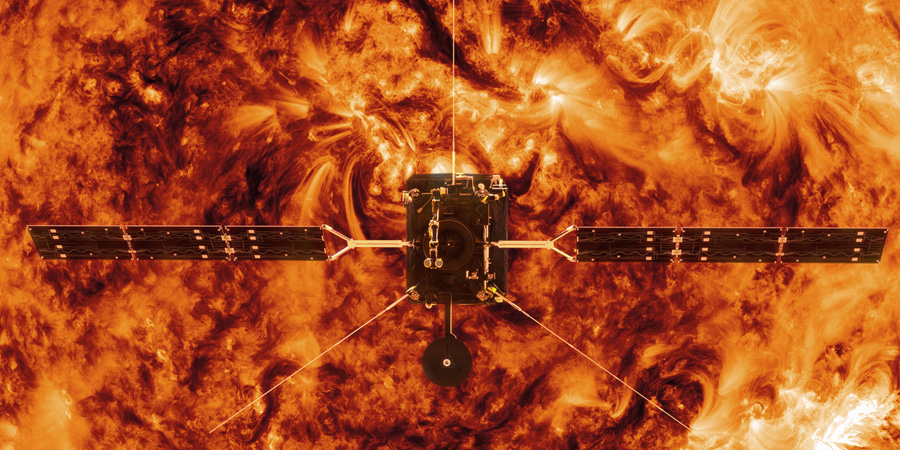Solar Orbiter successfully launched into space
Monday, 10 February 2020 18:49 UTC

An American Atlas V rocket has successfully launched the European Solar Orbiter satellite into space during the early hours of 10 February. This unmanned space probe is Europe's newest solar observatory which will start to study our Sun in just under two years from now. Its main mission is set to begin in November of 2021. At closest approach, Solar Orbiter will only be 42 million kilometers away from the Sun. Scientists hope to learn more about the solar wind, the Sun's polar regions, the Sun's magnetic field, solar activity and how it affects Earth. Solar Orbiter is an ESA mission with strong NASA participation.
The satellite was detached from the Atlas V rocket 53 minutes after launch and ESA was able to get in contact with the space craft shortly after. The goal is for Solar Orbiter to reach an elliptic orbit around the Sun. Solar Orbiter will make a close approach of the Sun every six months ultimately getting as close as 0,22 AU which is closer to the Sun than the planet Mercury. Solar Orbiter has 10 different instruments on board including an Extreme Ultraviolet Imager which will make pictures of our star closer to the Sun than ever before, in a very high resolution and with more details than we could every dream of. Solar Orbiter is fitted with a special heat shield which will protect it from the extreme heat it will face this close to the Sun.
Scientist are mostly looking forward to being able to study the solar poles, something not possible until now. Studying the heliosphere which is filled with the solar wind and other particles is also a key mission objective. To get closer to the Sun than the planet Mercury and get out of the plane of the solar system, Solar Orbiter will use multiple gravity assists from Earth and the planet Venus to increase its inclination out of the plane of the solar system to a maximum of 33 degrees. This way it will get an excellent view of the solar poles which has never been done before. Studying the solar poles might not sound very exciting but they actually hold the key in understanding more about the Sun's activity and the Solar Cycle.
If you want to learn more about Solar Orbiter and the ESA please check out this excellent website from the ESA.
Thank you for reading this article! Did you have any trouble with the technical terms used in this article? Our help section is the place to be where you can find in-depth articles, a FAQ and a list with common abbreviations. Still puzzled? Just post on our forum where we will help you the best we can!
Latest news
Latest forum messages
Support SpaceWeatherLive.com!
A lot of people come to SpaceWeatherLive to follow the Sun's activity or if there is aurora to be seen, but with more traffic comes higher server costs. Consider a donation if you enjoy SpaceWeatherLive so we can keep the website online!

Space weather facts
| Last X-flare | 2025/03/28 | X1.1 |
| Last M-flare | 2025/04/29 | M1.6 |
| Last geomagnetic storm | 2025/04/21 | Kp5+ (G1) |
| Spotless days | |
|---|---|
| Last spotless day | 2022/06/08 |
| Monthly mean Sunspot Number | |
|---|---|
| March 2025 | 134.2 -20.4 |
| April 2025 | 126.5 -7.7 |
| Last 30 days | 127.3 +0.3 |


